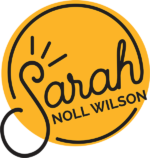
Have you ever been in an uncomfortable conversation where you didn’t know what to say, only to have that hit you like a bolt of lightning hours (or days) later? Have you ever felt so overwhelmed by what you had to do that you couldn’t do anything at all? Ever felt paralyzed by everything swirling around a to-do list, a project, a relationship, or a situation at work? Welcome to the freeze response, the next in our series on exploring the five stress responses (flight, fight, freeze, fawn, and flock). We’re tackling not only what each of these look like in the workplace, but also how we can manage them.
Let’s unpack freezing together.
The Freeze Response in the Workplace
A freeze response is the product of being so overwhelmed by stimuli that it essentially shuts down your ability to progress in the face of such stimuli. Sometimes, there is simply so much going on that our perception slows down. Our brain says . . . Is this really happening?
On some level, this isn’t necessarily harmful. As with all the stress responses, they’re there for a reason. Freeze tells us to slow down. It says: you don’t have to have a knee-jerk reaction to this. Let’s zoom out instead. When we contrast this response with others like flight or flight, a freeze response can almost be a very intentional observation of what’s happening. That’s good, right?
Yes sometimes. And no sometimes, too.
If we sit in freeze for too long, we can miss important information and opportunities. For example, if you see a colleague being treated disrespectfully in a meeting, you might feel so overwhelmed by the circumstances and by “not knowing what to say” that you unplug altogether. Staying unplugged might mean you miss a moment to advocate. Slowing down is often fruitful, but the other side of the coin is that some freeze-worthy situations do, indeed, require us to step up in a timely manner.
Here’s how this can look: I once worked with an extremely capable and effective executive who was working on her part of a big, consequential presentation for her organization. She didn’t have a technical reason to worry. She was qualified to deliver the information, respected amongst her peers, and had planned and prepped extensively. When the time came for her to deliver her part, she absolutely nailed it. Beautiful delivery. She was, however, so overwhelmed that she couldn’t remember anything that came after that . . . not the rest of the presentation, what else happened in the meeting, etc. She was physically there, but her brain had already said nope, I’m out.
I use this example intentionally to show that the freeze response, like all stress responses, happen to all humans, regardless of your position in an organization. You can freeze when taking coffee orders or when delivering a speech. Overwhelm is overwhelm.
It can also look different for different people. For instance, a parent and therapist I follow was recently discussing this exact issue but referred to it as “faint.” That piqued my interest especially as a potential manifestation of the freeze response in a literal way. You aren’t literally paralyzed if you are in a freeze response, though you may feel unable to move forward. Fainting due to overwhelm could be your body’s reaction to a freeze response. Though this is certainly a more uncommon physical manifestation, it’s worth mentioning as well.
Now that we have a fuller understanding of how freeze can look, let’s explore what we can do to help ourselves work through it in the future.
Strategies for Moving Forward
Recall that executive, the one who felt herself freeze after her part of the presentation? A lovely part of that story is that she sort of knew that might happen. That awareness is the absolute first step. Knowing when we’re nearing a stress response, or identifying situations in which a stress response might come up easily for us, is the foundation from which we can choose another path.
With that in mind, ask yourself if you’re prone to the freeze response. If you are, here are some strategies that might help:
- Anticipate, don’t fixate. A core component of the freeze response is the shut down, the slowness. We’re not capable of coming up with new ideas in those moments. But what if you already had the ideas saved? If you anticipate someone is going to make cuts to your department, or if you have a feeling an interaction is going to get tricky at work or at home, think of the top two or three things that might happen in the moment. What would you say? What would you do? You can even write these down. Doing a little pre-work can give us a folder of ideas from which we can pull in the moment, keeping us checked-in instead of checked-out. This is critical because when we’re in those uncomfortable moments, we can tell ourselves: this is going one of the ways I thought it was going to go. I’ve practiced and am mentally prepared for this. I know at least a couple of things I want to say here, or at least the main points I want to make. I’m not without a paddle. Think of it like downloading a show before you get on the plane. It’s ready for you when you need it, no extra thought or steps required. Be careful not to ruminate or fixate, though, and create more anxiety in the situations you imagine, though. Trust yourself, and keep it simple. Download the show, and try to make the most of your flight.
- Check yourself internally. But what if you’re a ruminator by default? What if the idea of planning what to do in anxious moments makes you . . . more anxious? That’s okay. Different strategies work for different people. One way we can overcome this is to go back to the idea of using mantras as a way to check yourself and switch the narrative from one of negativity to one of empowerment. For example, you could tell yourself: If this interaction goes the way I think it will, I will be okay. If it doesn’t, I will still be okay. These points are important to me, and it’s valuable that I make sure to be ready to communicate them in the moment. Focus on what you care about in a potentially uncomfortable situation and center your pre-work around that, choosing an appropriate time to interject/speak up when you feel that is the right thing to do. And remember . . . your perception of how something will go might not be reality, so selecting that timing carefully is important.
- Communicate. If you’re in a position of leadership–at work, as a volunteer, in a family meeting, and so forth–you can minimize the potential for a freeze response by giving those in attendance notice as to the direction you’re planning to go beforehand. Giving them something to think about minimizes uncertainty, which means there’s more room for that pre-work and can help increase the chances of a successful interaction–one where everyone and their beautifully different minds can show up ready to contribute. You can’t prevent stress responses in other people, but you can give them the information they need to help them stay present and bring their best selves.
What’s Next?
I will keep reminding you that we cannot stop a stress response from happening. If our brain signals “freeze,” we’re going to do that to some degree, full stop. Why? Because we’re amazing and complex creatures, and our brain is running the show. That’s a good thing. What we can do, though, is use that same brain to exercise a little more control, hold steady in discomfort a little longer, and, in turn, maybe see some different results.
How does a freeze response usually show up for you? Tell me in the comments so we can all learn from one another, and stay tuned for the next article in this series where we’ll cover the fawn response.

Dr. Teresa Peterson
Dr. Teresa Peterson is the Director of Learning and Development for Sarah Noll Wilson, Inc. In her daily work, she serves as Sarah’s key content collaborator. Teresa enjoys facilitating, researching, and is passionate about applying best practices for learning to make our experiences meaningful, engaging, and accessible for all types of learners. Teresa holds a Doctorate in Education from the University of Northern Iowa and brings over twenty years of experience teaching, facilitating, and leading to our team. Our clients love Teresa’s grounded energy, depth of thought, and ability to listen deeply.

